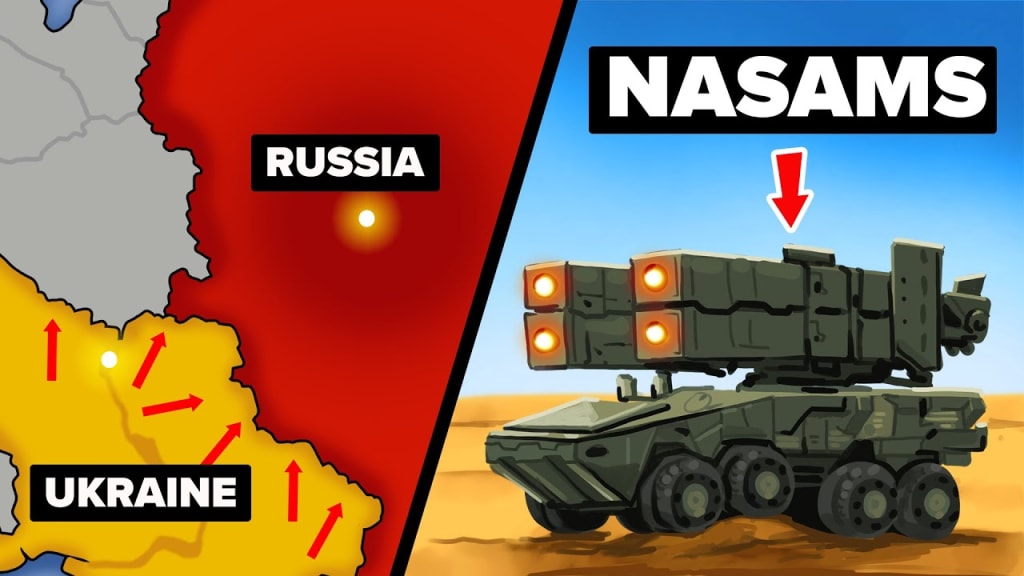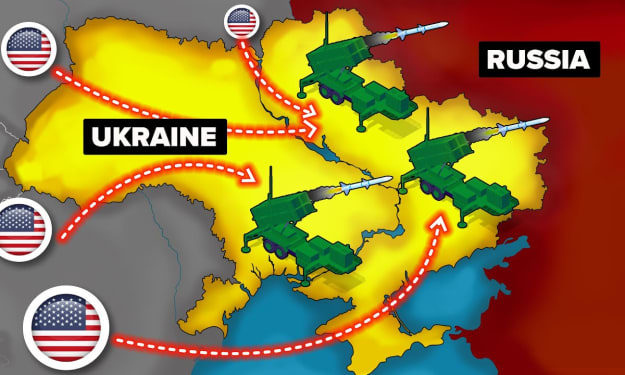Why is Russia anxious about Ukraine's use of NASAMS launchers?
When it comes to shooting down an aviation threat, the NASAMS is the weapon of choice for around a dozen other countries. So, what exactly is NASAMS, and why is Russia so concerned that Ukraine may use it? To discover out, read this pitch cornered narrative! 🔌🥵🥵🔌

When it comes to shooting down an aviation threat, the NASAMS is the weapon of choice for around a dozen other countries. So, what exactly is NASAMS, and why is Russia so concerned that Ukraine may use it? To discover out, read this pitch cornered narrative! 🔌🥵🥵🔌
When news outlets first reported in August that Ukraine would be receiving the National Advanced Surface-to-Air Missile System, or NASAMS, you probably scratched your head if you were like most people. Little is known about NASAMS, a next-generation surface-to-air defense system that has largely operated in the shadows. This is because a dozen or so other nations also use this highly classified and secret weapon when they need to shoot down an aerial threat. The NASAMS is a ground-based air defense system designed to operate in all weather conditions. So what exactly is it, and why is Russia so concerned that Ukraine might use it? This system is made to work both during the day and at night, and it can shoot on the target information provided by both internal and external sensors. Due to its 360-degree defense capability, nothing can escape its field of fire.
This makes it ideal for safeguarding static and moving assets as well as areas with a high concentration of people. Currently, NASAMS is working in the Middle East, South America, and Asia with six NATO nations and four partner countries. The US's NASAMS batteries are not frequently used. In fact, every NASAMS in the US arsenal is positioned to defend the National Capital Region, which includes Washington, DC. Because these systems are so expensive, US officials made this decision. The NASAMS is one of the most expensive air defense systems ever created, costing approximately 34 million dollars per battery. The NASAMS system is a complete self-contained unit, not just a missile battery. Even though there is a mobile missile launcher, it is useless without a fire control radar.
Both domestically constructed radars and radars made in Norway can be used with the system. States like the US have chosen to construct their own radars to incorporate into the system. The US-made MPQ-64 Sentinel air defense radar is incorporated into NASAMS in the US. It works both passively and actively in the X band of the electromagnetic spectrum. In other words, the radar has the ability to actively pulse energy in all directions or to passively scan for targets. The purpose of the NASAMS will determine why a user would want to do this. Batteries can be hidden until the very last second thanks to passive operations. The NASAMS is able to avoid being destroyed by radiation-seeking missiles when it is operating in passive mode because it is not emitting any radiation.
The battery can then switch to active mode to obtain the most precise fire control information either prior to launch or as a horizon scan to confirm the accuracy of the passive radar returns. A fire distribution center command and control unit is also installed on the missile system. The command vehicle that travels with each missile battery includes this section. This can also be customized to meet the needs of each nation, just like the radar. As an illustration, newer NASAMS versions support Link 16, whereas older versions only support Link 11. These tactical data links are simply safe ways for units to communicate with one another. Because of this ability, NASAMS batteries can use fire control information from distant units by transmitting it over a common data link.
The benefit of this ability is that it significantly increases the coverage and range of NASAMS batteries. A NASAMS can shoot down a target that it never actually detected with its own radar, in contrast to older Cold War systems that could only shoot down objects that their own sensors could capture. Due to its modular design, the system also excels in terms of usability and interoperability. Three multi-mission launchers, a command post, a shelter module, and a tactical control cell with TCO consoles make up the typical NASAMS unit. To avoid jamming and detection, the various parts of a hardwired communications network are typically connected to one another. Due to the modular nature of the system, it is adaptable to the requirements of various nations.
The NASAMS can receive ongoing updates as soon as they become available because it is not grounded in a specific data link, software, or weapon. The NASAMS standard unit can be integrated with a variety of anti-air capabilities, including cruise missiles, drones, and unmanned aerial vehicles, thanks to the data links the NASAMS is able to use. The units can shoot and move to avoid counter fire because they are highly mobile and can be transported by truck or rail. The missiles and launchers are more resistant to enemy attacks because they are dispersed. All calculations that are impossible for a human to make manually in real-time are done automatically by the Fire Distribution Center. For instance, the fire distribution center must act upon the raw radar data when the system detects an inbound threat.
But how does it work when the radar detects a missile return, the FDC instructs the radar to begin tracking the target. The computers begin analyzing what the unknown contact might be once sufficient data has been gathered to establish that it is a missile and not something else. All of this information is fed into the computer to determine what the threat might be because common Russian weapons like the Iskander and Kalibr missiles have distinct flight paths, speeds, and frequencies. The system then chooses the weapon for the operator to use after ascertaining the threat with as much certainty as possible. Missiles can be launched down range to neutralize a threat if the operator concurs with the computer's assessment of the danger.
In relation to missiles, the NASAMS's ability to fire a wide variety of missiles is one of its best qualities. The AIM-9 Sidewinder missile is one of the main weapons. The Sidewinder is a sophisticated air-to-air missile with superior airframe and weapon technology that was developed by the US Navy and US Air Force during the 1950s. The missile can be used in a variety of situations, including air-to-air, air-to-ground, and surface-to-air. It can be mounted on a variety of contemporary tactical aircraft thanks to its adaptability. The most recent version of the AIM-9 Sidewinder missile is the AIM-9X Sidewinder, which is in use by NASAMS. The AIM-9X Sidewinder missile underwent its first test by the US military in May 2006.
The National Advanced Surface-to-Air Missile System was used by the Army in 2015 to successfully launch the AIM-9X Sidewinder Block II missile. The US arsenal includes several short-range air-to-air missiles, but this one is the most sophisticated. It has a highly maneuverable airframe and cutting-edge infrared countermeasures. A new imaging infrared seeker is also part of the missiles' terminal guidance system. Greater tracking sensitivity and tracking stability are provided by this seeker. One of the most widely used anti-aircraft missiles in use right now; the AIM-9X Sidewinder is used by 22 nations worldwide. The US has improved the Sidewinder over its more than 60 years of service, despite the fact that its early iterations were not all that great.
Presently, it is among the most effective and affordable air defense missiles available. Although the Sidewinder is typically used as the primary missile for NASAMS by most NATO nations, including the US, there are other options. The more recent Infrared Imaging System Tail Thrust missile, also known as IRIS-T, is also available to governments. Germany led a six-nation initiative that resulted in the IRIS-T. The Sidewinder was the point-defense anti-air system that Greece, Italy, Spain, Sweden, and Norway wanted to be replaced with. Both a short-range and a medium-range version of the IRIS-T are offered. The 40-kilometer medium-range version has a range that is twice as great as the 12-kilometer short-range version.
The missiles have a GPS and an inertial navigation system to help direct them to their intended target. The actual missile is 3.2 meters long and 87 kilograms. 3 kilograms, and when fired, it makes only a little smoke. On the warhead, there is no millimeter-wave radar. It's still regarded as a semi-active missile, though. Once the missile is in flight, the semi-active missile receives radar data along with the fire direction center. The missile receives regular updates about its position and the location of the target as it travels along its flight path. For its terminal phase, the missile has an infrared imaging seeker, which acquires the target once it is within striking distance.
About the Creator
Enjoyed the story? Support the Creator.
Subscribe for free to receive all their stories in your feed. You could also pledge your support or give them a one-off tip, letting them know you appreciate their work.






Comments
There are no comments for this story
Be the first to respond and start the conversation.